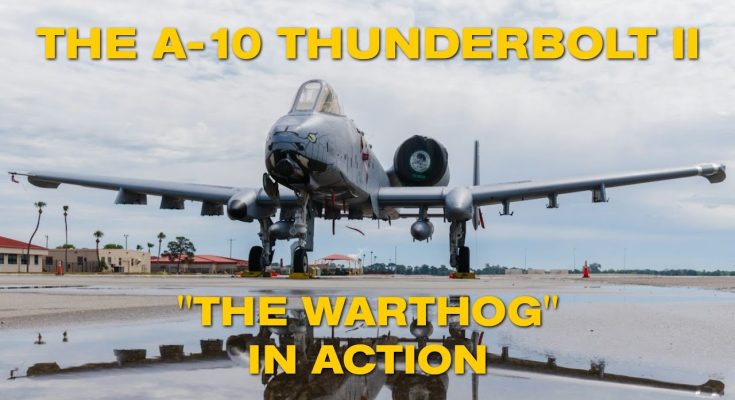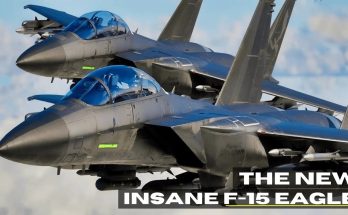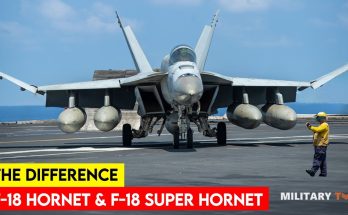The A-10 Thunderbolt II, affectionately known as “The Warthog,” is one of the most recognizable and fearsome ground attack aircraft in the world. Designed specifically for close air support (CAS) missions, the A-10 has earned its reputation as a rugged, durable, and lethal aircraft capable of delivering devastating firepower while operating in the most challenging combat environments. Here’s a closer look at why the A-10 Thunderbolt II is so revered and what makes it an unstoppable force in action:
1. Unmatched Firepower: The GAU-8/A Avenger Cannon
The A-10’s most famous feature is its GAU-8/A Avenger cannon, a 30mm rotary cannon that can fire up to 3,900 rounds per minute. The GAU-8 is capable of unleashing a devastating amount of firepower in a very short time, making it incredibly effective against enemy vehicles, armor, infantry, and fortifications.
-
Depleted Uranium Rounds: The A-10’s cannon uses high-explosive rounds and depleted uranium rounds to penetrate even the toughest armor, including tanks. This gives it an edge in engaging armored targets with extreme efficiency.
-
Accuracy and Rate of Fire: The A-10’s ability to deliver precise bursts of fire from its cannon ensures that it can destroy enemy targets in a single pass, while its slow flying speed allows it to maintain accuracy at low altitudes.
The GAU-8 is often considered one of the most effective weapons for close air support, capable of providing devastating firepower to ground troops in direct support of combat operations.
2. Tough and Resilient Design
The A-10 is built to endure damage and keep flying, a feature that has earned it its nickname “The Warthog.” Its durability and self-healing capabilities allow it to keep operating even after taking significant hits. Key design elements include:
-
Titanium “Bathtub” Cockpit: The A-10 features an armored cockpit made of 1-inch thick titanium, which is specifically designed to protect the pilot in the event of enemy fire. This “bathtub” is one of the key elements that allow the A-10 to survive even after sustaining hits from small arms fire or enemy missiles.
-
Reinforced Wings and Fuselage: The aircraft is designed to take damage and keep flying, with heavily armored wings and fuselage that protect vital components like the engines and avionics.
-
Redundant Systems: The A-10 has multiple redundant systems for critical operations, such as hydraulics, electrical systems, and fuel systems, ensuring that if one system is damaged, the aircraft can continue operating.
The A-10’s ability to absorb enemy fire and return to base after being heavily damaged is one of the reasons why it has been so successful in combat and close air support missions over the years.
3. Close Air Support (CAS) Expertise
The A-10 was specifically designed for close air support, meaning it is optimized to support ground forces by attacking targets that are in close proximity to friendly troops. Some of its key CAS features include:
-
Low and Slow Flight: The A-10 is capable of flying at very low altitudes and slow speeds (around 300-400 mph), making it perfect for engaging ground targets with precision. This ability also allows the aircraft to be more responsive to ground controllers who provide real-time target updates.
-
Targeting Systems: The A-10 is equipped with advanced targeting systems such as the Litening targeting pod, which provides infrared imagery and laser targeting capabilities for precision strikes against enemy positions and vehicles. The Sniper Advanced Targeting Pod further enhances its accuracy by giving the aircraft the ability to detect and engage targets at longer ranges.
-
Versatile Armament Options: In addition to its GAU-8 cannon, the A-10 can carry a wide variety of bombs and missiles, including laser-guided bombs (LGBs), Joint Direct Attack Munitions (JDAMs), and AGM-65 Maverick missiles. This makes it capable of attacking a broad spectrum of targets, from tanks and armored vehicles to infantry and fortifications.
The A-10 excels in combat scenarios where its role is to neutralize threats close to friendly ground forces, providing vital support in high-intensity environments.
4. Combat Proven: From Desert Storm to Modern Operations
The A-10 has seen combat service in numerous conflicts since its introduction in the 1970s, proving itself time and time again as one of the most reliable and effective platforms for close air support. Some key examples include:
-
Operation Desert Storm (1991): The A-10 was used extensively during the Gulf War, where it proved its ability to destroy Iraqi armored forces and ground targets with precision and overwhelming firepower. A-10s were responsible for eliminating large numbers of enemy tanks, trucks, and artillery pieces, earning widespread acclaim.
-
Operation Enduring Freedom (2001–2014): In Afghanistan, the A-10 provided close air support for ground troops fighting the Taliban. Its ability to operate in mountainous terrain and low-visibility conditions made it indispensable for targeting Taliban positions and providing aerial protection for U.S. and coalition forces.
-
Operation Iraqi Freedom (2003): During the invasion of Iraq, A-10s were instrumental in providing close air support to ground units, conducting precision strikes against enemy troops, armor, and infrastructure. The aircraft’s ability to stay low and slow while maintaining accuracy allowed it to support advancing ground forces effectively.
These combat experiences have cemented the A-10’s legacy as the go-to aircraft for close air support missions, especially in counterinsurgency and high-intensity conflict scenarios.
5. Low-Cost and High-Effectiveness
One of the reasons the A-10 remains in service for so long is its cost-effectiveness. Compared to newer and more advanced multirole fighter aircraft, the A-10 is relatively inexpensive to operate and maintain. Its simplicity in design and low operational costs allow it to deliver maximum firepower at a fraction of the price of more advanced aircraft.
-
Long Service Life: Despite its age, the A-10 continues to undergo upgrades that keep it viable on the modern battlefield. Its airframe is durable, and with the addition of advanced avionics, targeting systems, and weapons, the A-10 remains highly effective in today’s combat environments.
-
Efficient Fuel Usage: The A-10 is also designed for efficient fuel consumption, making it cost-effective for long-duration missions that require prolonged loitering over target areas. This efficiency allows it to stay in the fight for extended periods without needing to refuel frequently.
As a result, the A-10 is considered one of the most cost-effective weapons systems in the U.S. Air Force’s arsenal.
6. Continued Service and Modernization
Even after decades of service, the A-10 remains a critical asset in the U.S. Air Force’s inventory. The A-10C variant, which entered service in the early 2000s, features significant upgrades to its avionics, targeting systems, and weapons control, ensuring its relevance in modern combat.
-
A-10C Upgrade: The upgrade included digital avionics, precision targeting capabilities, and improved cockpit displays, allowing for more accurate targeting and better integration with modern weapon systems.
-
Sustainment Program: The U.S. Air Force has invested in sustainment programs to ensure that the A-10 can remain in service for decades to come, despite being nearly 50 years old. These programs involve structural upgrades, engine improvements, and enhanced capabilities to keep the aircraft operational.
Despite debates about replacing the A-10 with more modern aircraft like the F-35, the A-10 has proven time and again that it is still unmatched when it comes to close air support, and it is likely to continue flying for many years.
Conclusion: The Warthog in Action
The A-10 Thunderbolt II—the “Warthog”—is a legend in the world of close air support, combining sheer firepower, durability, and precision to provide unparalleled support to ground troops. Its GAU-8 cannon is one of the most fearsome weapons ever mounted on a military aircraft, and its ability to withstand damage and keep flying has made it a favorite of airmen and ground forces alike. Whether in combat missions, counterinsurgency operations, or force protection scenarios, the A-10 continues to prove that it is an indispensable asset in modern warfare, offering unmatched versatility and devastating impact in the hands of skilled pilots.



